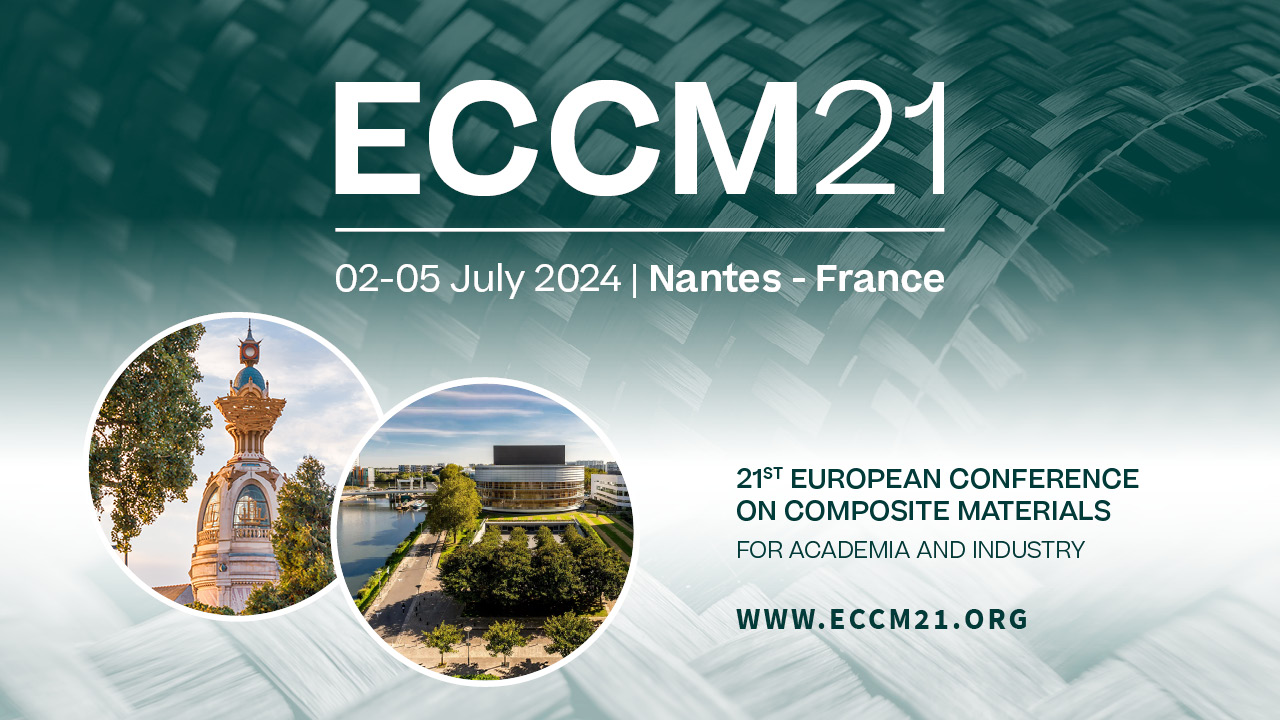Compressive energy absorption of 3D printed continuous fiber reinforced composite with different printing path
Topic(s) : Material and Structural Behavior - Simulation & Testing
Co-authors :
Min-Hyeok JEON (KOREA, REPUBLIC OF), Geun-Sik SHIN , Soon Ho YOON , Minkook KIM , Jun Yeon HWANGAbstract :
Lattice or grid-stiffened structures are used for lightweight design. Especially, composite lattice structures are highly efficient structure for bearing high loads. The structure consists of ribs to endure external loads and enhance buckling performance. External and internal loads in the structure are supported by each rib utilizing the high stiffness and strength of unidirectional fibers. These structures are manufactured through filament winding, automated fiber placement, and hand lay-up. Furthermore, the technology of three-dimensional (3D) printing of continuous fiber is becoming a promising technique, and can be employed for manufacturing composite lattice structures. Many studies have been conducted on 3D printed energy absorption structures with different types of unit cells and each unit cell exhibits different stiffness, strength, and energy absorption properties. The structure printed with continuous fiber has joint points between each rib. The printing strategy for these joint points is important for enhancing the energy absorption capacity; however, study on this aspect is not sufficiently reported.
In this study, the compressive energy absorption capacity of a 3D printed composite lattice structure with three different types of printing paths was investigated. T300 carbon fiber tow and thermoplastic polylactic acid (PLA) filament were used in the fabrication process. The printing paths of each specimen are illustrated in Fig 1. In Pattern I as shown in Fig 1 (a), the filaments with carbon fiber tow are crossed at the joints on the same layer. The filament can pass through the previously printed filament because PLA was in a liquid state during printing. Pattern II is similar to Pattern I. The filament in one direction was printed first, and that in the other direction was printed at the upper layer. There are empty spaces between the filaments and those were subsequently filled by the melted PLA. In Pattern III, the filaments were printed without crossing. At the joints, the printing path was set to turn around without crossing. The purpose of this test is to investigate the in-plane properties of the specimen, and the specimen was printed with a sufficiently thick thickness to prevent out-of-plane buckling. Some parts were cut from the manufactured specimen to inspect the printed fiber path at the joint. Compression tests on the printed specimens were conducted using the ASTM D3410 fixture. Glass fabric tabs were attached to the top and bottom areas of the specimen, and a stable and uniform compressive load was applied to specimen by shear force from the fixture. The fracture mode after the test was observed. To examine the energy absorption properties with different printing paths at the joint, specific stiffness, specific strength, and specific energy absorption were calculated and compared for each specimen.
In this study, the compressive energy absorption capacity of a 3D printed composite lattice structure with three different types of printing paths was investigated. T300 carbon fiber tow and thermoplastic polylactic acid (PLA) filament were used in the fabrication process. The printing paths of each specimen are illustrated in Fig 1. In Pattern I as shown in Fig 1 (a), the filaments with carbon fiber tow are crossed at the joints on the same layer. The filament can pass through the previously printed filament because PLA was in a liquid state during printing. Pattern II is similar to Pattern I. The filament in one direction was printed first, and that in the other direction was printed at the upper layer. There are empty spaces between the filaments and those were subsequently filled by the melted PLA. In Pattern III, the filaments were printed without crossing. At the joints, the printing path was set to turn around without crossing. The purpose of this test is to investigate the in-plane properties of the specimen, and the specimen was printed with a sufficiently thick thickness to prevent out-of-plane buckling. Some parts were cut from the manufactured specimen to inspect the printed fiber path at the joint. Compression tests on the printed specimens were conducted using the ASTM D3410 fixture. Glass fabric tabs were attached to the top and bottom areas of the specimen, and a stable and uniform compressive load was applied to specimen by shear force from the fixture. The fracture mode after the test was observed. To examine the energy absorption properties with different printing paths at the joint, specific stiffness, specific strength, and specific energy absorption were calculated and compared for each specimen.

